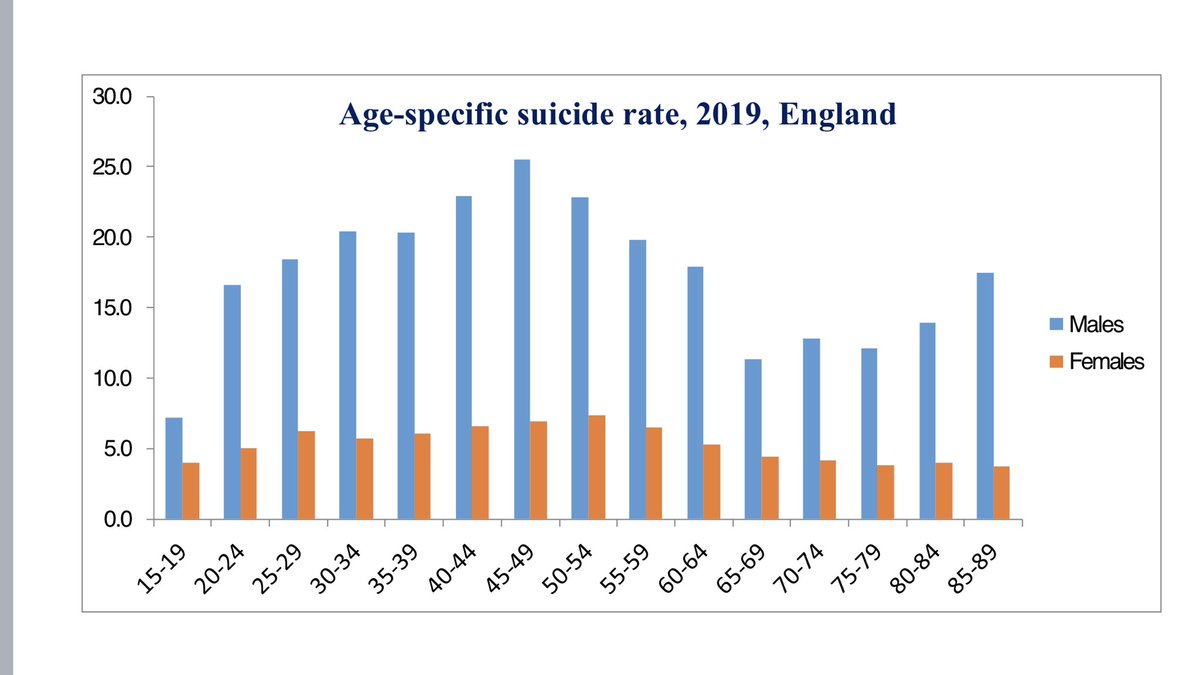
In 2021 #suicideprevention will remain vital to the #Covid response, so this is a good time to sum up what we know re the impact on suicide. Simple answer is that several countries have now reported no rise. But the picture is more complex, as always with suicide stats. /thread
First, it’s important to stress that graphs & data represent real lives tragically lost. No suicide rate, whether high or low, rising or falling, is acceptable. Even before Covid there were over 6000 deaths by suicide per year in the UK.
From the start of the pandemic there was concern that suicide rates would rise. In April we set out a prevention plan covering groups at risk, #mentalhealth care & economic protections (lead author David Gunnell @SASHBristol):
thelancet.com/journals/lanps…
thelancet.com/journals/lanps…
It took several months but a number of countries have published national or state-level suicide data. Most have found no effect. These reports come from Norway, Sweden, Australia, NZ, US & Canada. We summarised the evidence here, lead author @ProfAnnJohn:
bmj.com/content/371/bm…
bmj.com/content/371/bm…
In England we have had to set up new data collection - “real time” surveillance (RTS) - as inquests can take months. Here also we have seen no change pre- to post-lockdown, at least in those areas with good quality RTS, total population 9m. Now being expanded & updated. 

Our conclusions however were cautious. These are early figures & may change. Within the overall finding, there could be different effects between population sub-groups or geographical areas - after all, the impact of Covid itself has not been uniform across communities. 

One country has reported a different pattern - Japan, where a fall initially occurred, followed by a rise, esp in females. Possible causes include the economic role of women & celebrity suicide. But is Japan an outlier or a warning to the rest of us?
medrxiv.org/content/10.110…
medrxiv.org/content/10.110…
Then there is Maryland (US) where the effect has varied by ethnicity, with a rising rate in the black population & a falling rate in whites. Could this reflect the experience, the trauma, of the pandemic combined with underlying economic disadvantage? jamanetwork.com/journals/jamap…
We also have to square the findings on suicide with the distress found in surveys & calls to charities. Both can be true. Alongside extra stress there may be added support from family, neighbours & services. A sense of getting through this together may have been protective.
What of self-harm, which should mirror suicide more closely? Community SH rates too have been stable while hosp attendance with SH fell in lockdown, though reluctance to go to A&E probably played a part. Summarised here, lead author Nav Kapur @NCISH_UK:
thelancet.com/pdfs/journals/…
thelancet.com/pdfs/journals/…
Yet the dominant narrative in the media & social media has been of suicide escalating. Countless claims & headlines have appeared, based on limited data at best. Misleading & potentially harmful, as explained here, lead author Keith Hawton @OxPsychiatry:
thelancet.com/journals/lanps…
thelancet.com/journals/lanps…
Where does that leave the evidence so far? Suicide rates have not risen in the way many feared but we are still in mid-pandemic. Now the question is changing, becoming more nuanced - not whether there will be an effect overall but who is most vulnerable, where & when?
There are risks as we enter 2021. The social coherence of last April seems to have eroded. There is a weariness about a further cycle of restrictions. There are fears for the future of young people & the economy.
The task for us all in the coming months is to ensure a focus on #mentalhealth, on anyone lonely or mentally ill, in crisis or financial hardship. We need to rediscover the values that unite us & the benefits of mutual support. And remind ourselves there is an end in sight.
• • •
Missing some Tweet in this thread? You can try to
force a refresh





